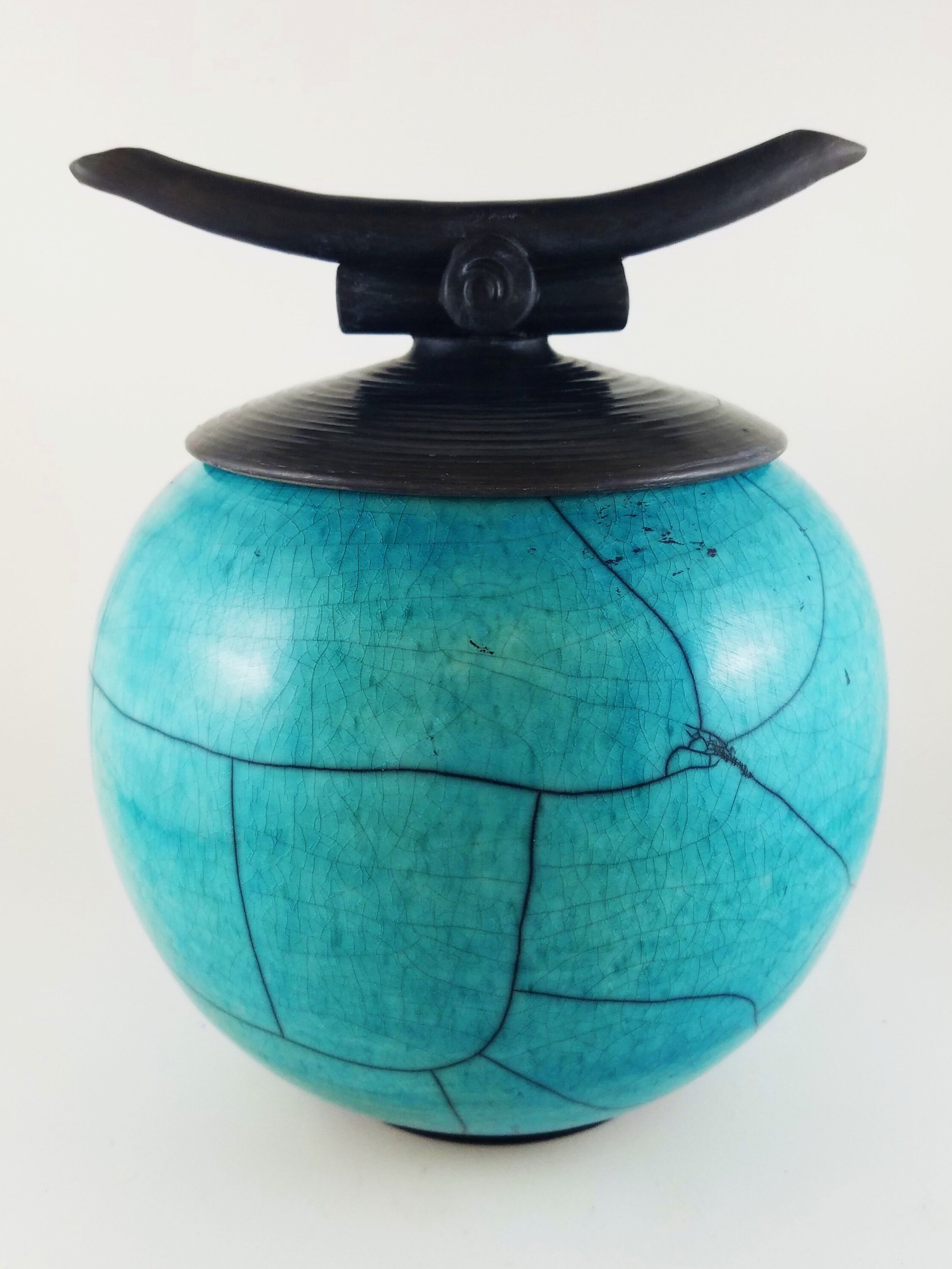
Into the Flame
Kiln Glow Pottery studio is the workshop of Raku and Alternative Firing pottery artisan, Deb Kircher. There, explorations of clay, oxides, organic elements, and fire occur to create beautiful, one-of-a-kind pieces of ceramic art to be gifted or lovingly displayed in a home, office or collection.
Saggar Firing
The artist…
I had one semester of ‘formal training’ in pottery throwing when I was in 7th grade. When I finally managed to center a small lump of clay and raise the sides about 4 inches, I was so proud and called my art teacher to come see. He immediately took a wire and cut right through the center of the piece to show me where the walls were too thick and too thin. I laughingly say I never quite recovered …but I sure did learn!
I especially learned I loved the challenge of creating elegant forms that could survive the trials of a tough teacher. Raku is literally trial by fire. Every raku pot is earth’s elements, imagination, the right guiding touch, and fire coming together to form something that will never be exactly replicated. Knowing a piece may not survive the extreme process is daunting, yet when it does, with all its fire-kissed scars and uniqueness, there is joy.
Each piece is handcrafted and one-of-a-kind, making it exclusive.
Glazed
The art…
Raku, pronounced "rah-koo", is a fascinating ceramic technique that originated in Japan around the 1580s. The traditional Eastern Raku technique involves firing clay to 1400° - 1950° F in a specialized kiln, removing it while red-hot, and allowing rapid cooling of the piece. The rapid cooling causes each raku piece to develop unique colors and patterns, and the intensity of the entire process speaks to the “tenacity” of the surviving piece. Developed later, Western Raku techniques integrate other reduction and finishing processes.
Wabi-Sabi is rooted in Zen Buddhist principles of “simplicity” or “understated elegance” (Wabi), and “finding beauty in imperfection” (Sabi). The Raku process is serendipitous - often a series of happy accidents. Raku artists and collectors embrace the randomness of the end result and the unique beauty of each unpretentious, imperfect piece. In other words, there is a lot of Wabi-Sabi in practice!
Each piece follows a journey of fire and smoke all it’s own, making it truly unique.

The process…
Each piece takes multiple steps over several weeks to complete.
Depending on the imagined piece’s complexity, throwing or handbuilding can take a few minutes to a few days.
When leather-hard, the bottom or foot (and lid) is trimmed and the surface detailed, burnished or coated with terra sigillata.
When completely dried, the greenware piece is bisque fired to 1450° - 1750° and cooled over a 36 hour period.
Depending on the technique, glazes, oxides or organic elements are applied to the surface of the bisque ware by brushing, spraying, pouring or dipping.
Firings to convert the applied elements to the final finish can move very fast in a gas kiln or take a couple days in a pit or barrel firing.
Post-fire reduction creates carbon markings and allows color to develop…this is also when most loss occurs.
Each technique is a slightly different process - described in the Gallery.
Because each piece is unpredictable, I do not often take on commission work. If , however, you are willing to embrace the spirit of Raku and accept the unexpectedness of the outcome, I am willing to try to create a special piece just for you.





